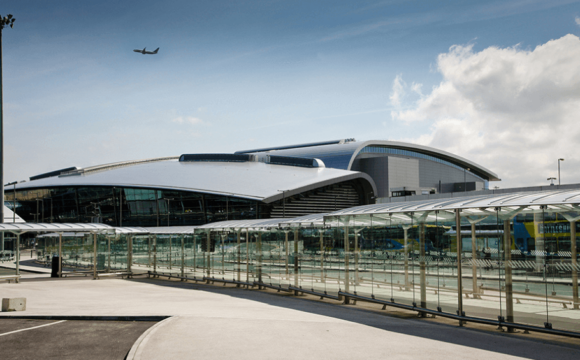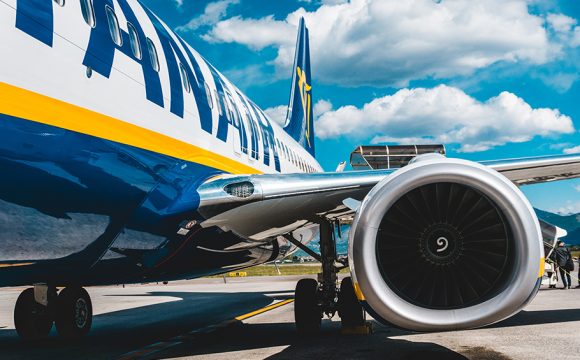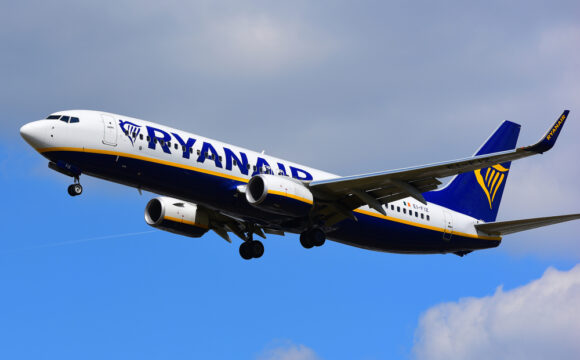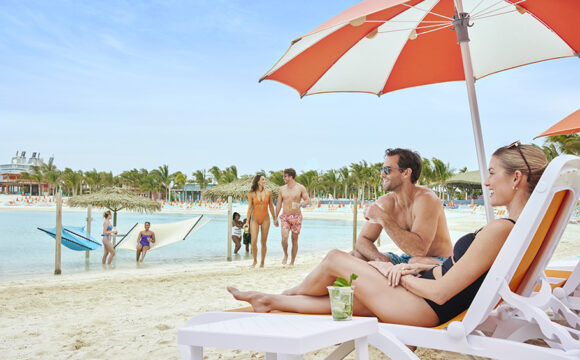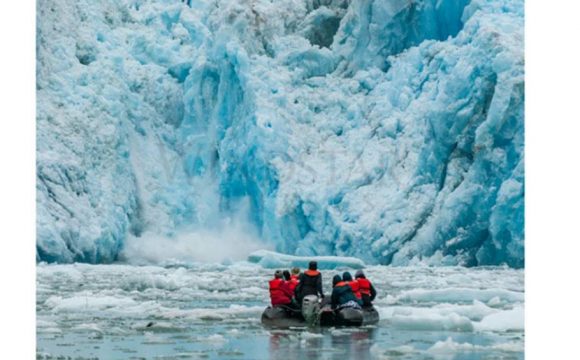The Belfast-Iceland service started last year (June 1, 2017) and operated three times a week on Tuesdays, Thursdays and Sundays.
The final service from Belfast to Reykjavík will be the FI7911 on May 15, 2018 and the final service from Reykjavík to Belfast will be the FI7910 on May 15 2018.
However a direct scheduled flight to Iceland from Dublin, is due to start from May 8, 2018 and will operate six-times a week, year round.
Customers due to travel with Icelandair from Belfast after May 15, have the options of travelling to Reykjavík from Dublin, changing the date of travel or receiving a full refund.
A spokesperson for Icelandair said: “Icelandair regrets to announce that the airline‘s direct flight service to Reykjavík from Belfast will be suspended from 15 May 2018 due to commercial reasons.
“The flights were a co-operation between Icelandair and domestic carrier Air Iceland Connect and operated by a 72-seat Bombardier Q400 aircraft.
“We are sorry for any inconvenience caused with these changes.”
Inspired by Iceland – A Year-Round Destination
With its abundance of mountains, volcanoes, glaciers, river, lakes, caves and otherwise rough terrain waiting to be tackled, every day there is an adventure waiting to happen in Iceland – but it’s not just an outdoor enthusiasts paradise, it’s also a warm and welcoming place to de-stress and relax
Iceland is rugged and beautiful. And perfect for most outdoor adventures, all year round. The landscape serves as an epic backdrop to whatever activity you have in mind. But don’t take our word for it. Just see for yourself.
Most people come to Iceland for nature. Big mistake. Iceland’s most unrivalled treasure is the people, who are warm and friendly, and easy with a smile. Enjoy a walk around town, visit the local swimming pool, and purchase local produce, for a chance to mingle with truly friendly people.
The creative juices flow in Iceland, just like the geothermal water. Experience music, literature, art and design in our many venues, our galleries, and the makeshift creative spaces in old factories around the country.
Icelandic food is another gem, awaiting you to discover it. Sustainable use of food resources is important to Iceland, and “local grown” and “slow food” are descriptive phrases for Icelandic traditions, where food is a gift that can easily keep on giving, for a whole evening.
11 reasons why you should visit Iceland:
- Whale Watching: Iceland is the perfect location for whale watching. The cold waters off the coast play host to a diverse marine life. During the summer months in particular, the shores become a veritable feeding ground for multiple species of large marine mammals, giving visitors a chance to observe these magnificent creatures in their natural habitat. From April through September over 20 species of Cetacea—including the Orca, Minke, Humpback, and Blue Whale—can be seen in the North Atlantic and Arctic oceans on either side of the island.
- Swimming Pools and Spas: The local natural wonder that is perhaps most ingrained in the fabric of Icelandic culture is the bounty of geothermal energy, the naturally heated water that powers our lives and heats our homes, baths and pools, public as well as private. The spa is a modern day invention, but enjoying the various health benefits of bathing in thermal baths is an Icelandic tradition dating back to the settlement. Snorri Sturluson, the famous twelfth century historian and author, was a prolific spa enthusiast by modern standards, and had his own thermal pool built so he could soak in hot water whenever the mood struck him. Of the thirteen baths that are known to have been used in the early days of the Icelandic society, four are still standing.
- Icelandic Horses: The Icelandic horse is a unique breed of smallish horses that came to Iceland with the first settlers from Norway 1100 years ago. Archeological digs in Europe have revealed that it is descendent from an ancient breed of horses that is now extinct outside of Iceland, where it has been preserved in isolation. The Icelandic, as it is commonly referred to, is known for being sure-footed and able to cross rough terrain. It displays two gaits in addition to the typical walk, trot, and canter/gallop commonly displayed by other breeds. The first additional gait is a four-beat lateral ambling gait called tölt.
- Northern Lights: The Aurora Borealis, more commonly referred to as the Northern Lights is a natural phenomenon created when particles emitted by the sun interact with the atmosphere in the Earth’s magnetic field. This releases energy, causing peculiar luminous green streaks across the skies. On clear winter nights, sightseeing trips are organized around this spectacular—though fickle—natural phenomenon. The ideal location for sightings varies and excursion leaders are skilled in “hunting” the lights, finding locations where conditions are best for seeing them on any given night. There are no guarantees that you will see the Northern Lights during your stay, but in most cases, sightings are immediately improved outside populated areas, especially away from the light-pollution of the capital. A number of hotels in the country side offer special Northern Lights wake-up service.
- Hiking: Iceland is the hiker’s paradise. More than half of the country lies above 400 meters (1300 feet) and the landscape is extraordinarily diverse, with large areas covered with colorful mountains, lava fields, glaciers, hot springs, lakes, and black sands. The rugged nature has been shaped by the elements to form a majestic scenery unlike any other place in the world.
- Cycling: Travelling around Iceland on two wheels is both challenging and rewarding. There is no better way to experience the beauty of Iceland than from the saddle of your bicycle. But the weather is unpredictable and the distances you’ll need to cover can be long. Many bike enthusiasts come to Iceland to enjoy the Ring Road, the well-known highway number one, that runs around the country. Others choose more difficult paths into the highlands, such as the beautiful trail across Kjölur.
- Caving: Due to its position on the Mid-Atlantic ridge, Iceland is one of the most active volcanic regions in the world. Its unique geological conditions make for some awe-inspiring rock formations, both beneath the surface as well as above it. Various tube caves—formed by magma flowing underneath the earth’s surface after lava has solidified overhead—can safely be explored through guided excursions year-round.
- Ice Climbing & Hiking on Glaciers: When making a trip to Iceland, it is hard not to pay special attention to the country’s namesake—namely, its 4,500 square miles of glacier. Ice climbing on the glaciers is practiced year-round and takes place mainly on the Sólheimajökull and Svínafellsjökull glaciers in the south of Iceland, to which day trips are offered from Reykjavík (and Skaftafell).
- Birdwatching: Iceland is often referred to as a birdwatcher’s paradise, as large colonies of seabirds and waterfowl are indigenous and easily visible around the coasts. The birds most frequently spotted along the coasts of Iceland include the Arctic Tern, eiders, waders, and passerine birds, as well as seabirds such as the Guillemot, Razorbill, the Atlantic Puffin, Fulmar, gannets, and various gulls. Destinations for bird watching day trips from Reykjavík include the Reykjanes Peninsula, the Snæfellsnes Peninsula or the Westman Islands, where Iceland’s largest puffin population lives.
- Helicopter Tours: Iceland’s diverse landscape is at its most breathtaking when viewed from above, which makes aerial sightseeing tours by plane or helicopter an awe inspiring experiences. Many of Iceland’s most beautiful locations are in remote areas, where the rugged terrain can be difficult to traverse. Flying allows you to reach hard-to-access places with limited effort, and gives you an opportunity to experience nature from a new perspective. And if you are in to skiing, there are pristine areas ripe for Heli skiing in many areas. Take your skiing to new heights by reaching untouched slopes via helicopter. This unforgettable experience is an epic adventure, combining powder skiing with an exhilarating air journey and incredible views.
- Museums: Get to know the history of Iceland, delve into the cultural heritage or be amazed by outlandish curiosities. The range of museums in Iceland is vast, and they all aim to educate and entertain their guests.





